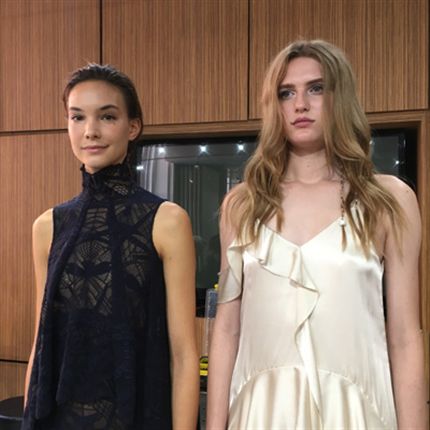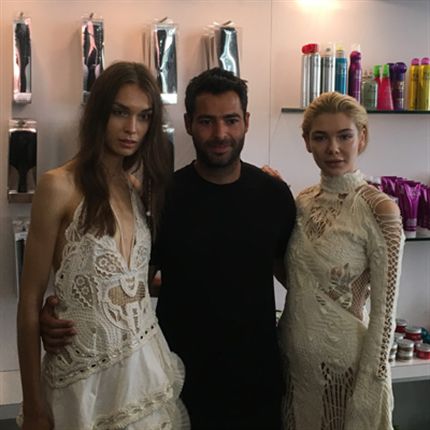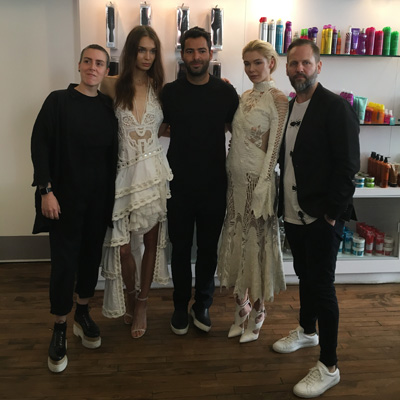5 Things To Know Before Working Backstage At Fashion Week
Fashion Week—it’s so much more than what meets the eye. What goes on in the months, weeks and days prior to the event is so massive, it can be hard to fully understand. We stopped by the TIGI Academy in SOHO for a sit-down session with Creative Director Thomas Osborn and U.S. Session Director Adriana Papaleo, as well as fashion designer Jonathan Simkhai for a breakdown of what it really looks like to work backstage at fashion week.
1. The Ground Rule
The biggest thing to understand is that working backstage at Fashion Week is very different than working behind the chair. Thomas says he loves working with Jonathan because he is always willing to collaborate with the lead hairstylist backstage, however that is not always the case, and as a stylist at Fashion Week your end goal is to always bring the designer’s vision to life.
“You have to step outside the box and listen to what the designer is saying, you have to see his clothes and his collection—you have to work with that vision to create a story. The hair has to match the clothes and explain the full journey, otherwise nobody wins,” says Thomas.

Both of the looks above were for Jonathan Simkhai shows
created by the TIGI team.
2. The Fashion is in the Details
Before working backstage, you have to be willing to understand the creative process. Adriana explained that the beauty of fashion happens in the details, and the hair is just one part of all the details that come together. “Fashion is so massive, every stitch of thread, every piece of hair works to really create an identity. It can be hard to see in the moment, but over time those stitched threads and that placement of hair are what make up a collective style, and that style leads to what our era of fashion will look like.” says Adriana.
3. The Process
Thomas and Jonathan explained the process from the very beginning—from the brainstorming sessions to the multiple hair tests. The first meeting usually takes place over the phone and the designer will go into all of the details—everything from the inspiration to the textures being used in the collection. Between the inspiration call and the hair test, both the hairstylist and designer are constantly brainstorming. The test is where the magic starts coming to life. “We’ve had hair tests that have gone perfect and we’ve been done in 20 minutes and we’ve had hair tests that have gone more than five hours,” says Thomas. It all depends.
4. The Connection Between Hair and Fashion
“As a hairstylist, we might not feel as attached to fashion…but we should be. We have the honor and responsibility to give someone more confidence in their daily life,” says Adriana. That should mean you’re keeping up with the latest styles and trends. Social media has given everyone a platform to stay as connected as can be. Fashion is more attainable than ever before, and you can use that to your advantage.

Jonathan and his models.
5. The Flowing Creativity
Jonathan Simkhai admits it’s sometimes hard for him to always stay creative—no one ever wants to become stale in the fashion world. And his advice holds true for fashion and hairstyling: “It’s not always about reinventing, sometimes it’s about consistency and doing what you know you can do.” And, when it gets really tough to keep the creative juice flowing, he puts it in a perspective most people can relate to: “I think about lifting weights at the gym, after a hard set you have to give yourself some time and trust that when you come back, you’ll be able to do another set. I work the same way with my fashion.” Give yourself the space to walk away, let go and then come back to it, and if that still isn’t working, “Dance, drink and sing!”







